Howdy!
I have been driving through the Southwest and have had a ton of audiobook time. When I’m not jamming out to the same emo trash that I’ve listened to forever, laughing along to a podcast, or checking out a fiction book I’ve been meaning to read, I am catching up on some work-related nonfiction. There’s a book that’s been on my radar for a while, The Way Out by Alan Gordon. I had bought it a year and a half ago, and you know how it goes. Anyways, I figured no better time to begin it than on my drive to the Valley of Fire.
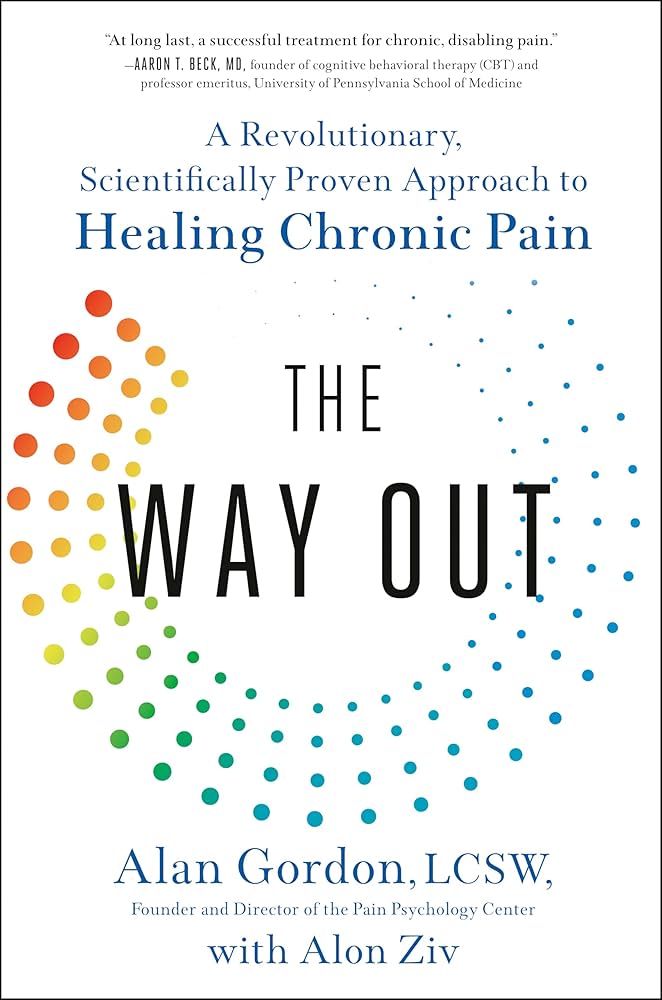
I work a bunch with folks who manage chronic pain — whether it’s chronic pelvic and sexual pain, pain leftover from injuries or surgeries, or pain associated with body checking and health anxiety, childhood trauma, or other chronic illnesses and conditions.
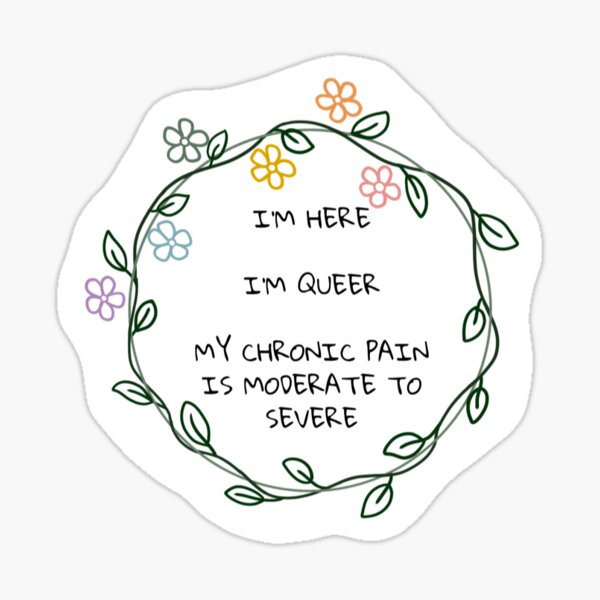
Many of us, myself included, were sold the narrative that chronic pain and chronic health conditions were something that happened later in life. Consider us unprepared, then, for managing unremitting symptomology that occurred “earlier” in life, setting us apart from our peers. A CDC study estimated in 2021 that 20.9% of US adults experienced chronic pain, which amounts to a number greater than one in five. Odds are, if you don’t experience chronic pain, you absolutely know someone who does — and likely more than just one.
My education on pain included the knowledge that it arises as a result of an injury, that it’s a danger signal of something gone wrong. A check engine light that creates a nagging feeling I need to do something differently or address something — all the way up to fear of major injury or illness that needs to be treated.
Emerging scholarship concerning chronic pain demonstrates that that’s only part of the definition of pain. We can call pain that arises from illness or injury allopathic pain — that is, it is a representation of this warning system working properly. A tissue is injured — it creates a pain signal — we wait for the tissue to heal and work to not stress it — the tissue heals — the pain signal lessens and stops. Right?
What then, of chronic pain? Is that a signal that healing has never taken place? What about chronic pain that lasts years?
The answer is a complicated, maybe. But also, probably not.
Gordon discusses chronic pain as Neuroplastic Pain, that is, pain that exists in the absence of injury or illness, and is not a warning sign of a problem with the body’s tissues. Gordon argues that most chronic pain is neuroplastic pain. It is named as such to demonstrate the brain’s ability to adapt to circumstances: in this case, the brain becomes accustomed to noticing bodily signals which it then interprets as pain.
Bodies wear and tear over time. We get older, injuries happen. We are too sedentary, we have poor posture, we lift one too many boxes not with our legs when helping a friend move. You know the drill.
In the American system, when the pain begins, we seek a medical diagnosis, using the medical model our country and culture have given us. We describe the pain to a doctor, we get sent to a specialist, they take imaging to determine the problem, then prescribe drugs or surgeries. Sound familiar?
The problem with wear and tear being a normal thing is, that it’s likely that an X-ray of your back, for example, is going to show a disc herniation, or a PT evaluation is going to show a muscle weakness. Rather than this being a sign of being a human in a body that has seen some shit, it could be taken as evidence that chronic pain is allopathic, rather than neuroplastic. So, the treatments that are recommended tend to address the tissues.
This sounds great for a person who did a bad slide tackle in soccer and now needs a splint or surgery. This isn’t so straightforward for someone who wants to determine why they have never been able to put a tampon in, even after years of PT.
Pain can persist beyond the body’s healing. For the folks who have had an injury and treated it and still have pain years after the fact, it’s very likely that the pain has turned into neuroplastic pain and won’t respond to treating the tissues.
Don’t you fucking hate the doctor taking an X-ray and declaring nothing’s wrong?? I mean, I love that for you, but also, what then?!
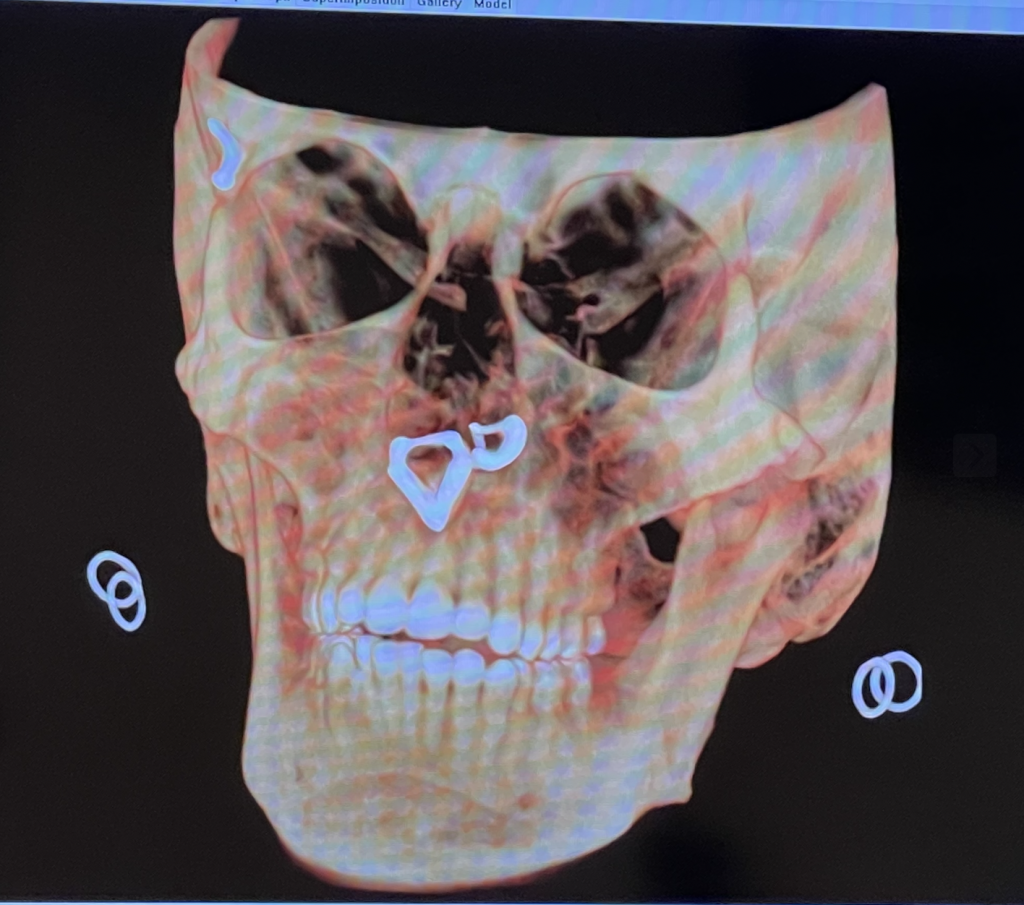
“It’s all in your head.”
Is that not the most dreaded thing to come of chronic pain?
You’re fucking exhausted, feel like shit, are going to your 87th doctor’s appointment, when your provider might throw up their hands and indicate it’s all in your head.
Are you making this up? Are you choosing this? Are you truly creating your own suffering??
Well, no. Not really.
But, the fact of the matter is, pain does occur in the brain. So, like, I guess it’s in your head. Even so, it’s doubtful that you’re willfully creating your own suffering. But, the stigma associated with chronic health conditions, let alone a chronic pain condition, can be very difficult to handle! Managing invisible pain is awful, and can touch every part of a person’s life.
The pain is real. It’s not made up. You’re feeling it, and if your health insurance would just choose to cough up a few thou, you’d be able to see it on an fMRI brain scan. The pain is real.
Pain is a danger signal.
Our bodies evolved to have great sensitivity to danger signals, because that’s what keeps us alive. Seeing a snake and feeling a fear reaction that makes us jump backward is adaptive. Avoiding pork chops when they made our tummies hurt last time, is adaptive. Freezing up when our friend acts like they’re gonna throw a koosh ball directly in our eyes — guess what, adaptive.
Pain can also be a false alarm, in the case of neuroplastic pain. Sure, when I fell down the stairs, the pain that erupted in my body was a signal: something is wrong. No shit, I fucked up my ass and back. But, the pain that continued in my body two+ years later, after I had been through rounds of evaluations and surgeries and injections and PT — that pain was a false alarm. My brain had become accustomed to the alarm — so it just kept populating it. Long after my body’s tissues had healed. Well, as much as they could — that disc is never going back in.
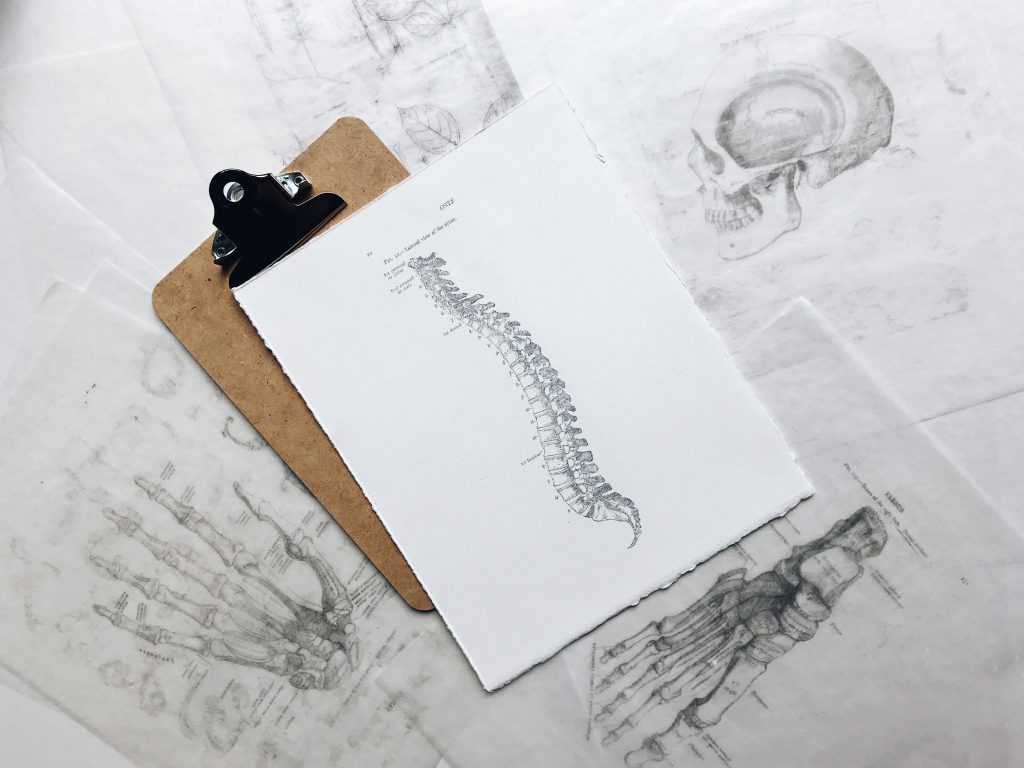
Fear can cause neuroplastic pain. We anticipate pain, so we feel it. When you anticipate someone throwing a ball at your face, you flinch, even in the absence of the ball. You’re not stupid. Your brain is just adapted to protect you. When you anticipate pain, something happens. Whether it’s a clenching up, a flinch, or actually feeling the pain itself even in the absence of a pain-causing stimulus like an injury. Gordon cites numerous studies in his book to demonstrate this. He, and many others, state:
Neurons that fire together, wire together.
What this cute little slogan means, when your brain anticipates or does something enough, its associations with it become stronger.
When I first learned how to drive, I was clunky, and horrified, and had no idea how someone looks at all those fucking mirrors and buttons and dials and numbers at once. It was so overwhelming. I had to practice a ton, consciously. And, the more I did that, the better I got. I developed more instincts and strategies to manage myself on the road. And now, after so so so much practice, I am sure the drive I will make tonight from Las Vegas to Page, AZ will be done largely unconsciously. Why? The repetition I had when learning to drive and practicing this skill caused my neurons to fire in a way that created stronger connections.
This is how the brain learns. Learning new skills literally and figuratively causes your brain to grow new connections between things: so even though at first, learning something feels like whacking your way through thick brush, eventually, it will feel as simple and accessible as jumping on an empty six-lane super highway. In fact, it becomes almost irresistible not to. The brain chooses the six-lane highway over the rough rocky trail every time.

Now, this largely adds to our success as a species: we learn stuff, our brain grows, and we’re fucking great at that. But sometimes, the brain forms connections that are maladaptive.
We all have a story like this:
When I was a kid, I ate pork chops that my mom fried with onions and then baked in a tomato sauce. One time I ate this and then I threw up all night. Now, I was definitely just sick — it wasn’t the food that caused the problem (I was the only person in my family who had this issue that night, love that for me). But, what my brain learned? NEVER EAT PORK CHOPS AGAIN. My brain created a six-lane highway overnight that determined that pork chops were a quick exit off to barfland. And, I have largely avoided them since.
We can have an association form quickly like that, after a traumatic event. I fall down the stairs, injure my spine, it’s traumatic as fuck, I might grip the rail at every stairway now extra hard till the end of time, or even avoid stairs altogether! Difficult.
Or, an association can form slowly, insidiously, over time.
Conditioned responses to pain can create associations of danger and fear. Fear can strengthen reactions to pain, and eventually lead to anticipation of pain. This anticipation can cause pain. And this is the positive feedback loop that can lead to chronic pain and other chronic health conditions.
Like Gordon, when my back injury occurred, I learned to fear sitting. Doctors told me I had ruptured and herniated my L5/S1 disc, and cracked my tailbone. I was very, very wary of sitting on it, as I was told to be following my injury. However, this worry about sitting persisted long after the injury, and even now I find myself critically looking at certain chairs and wondering if they’re gonna kill my ass. This stuff lingers in a way that you’d get if you’ve been there (and I hope you haven’t): folks with chronic pelvic pain analyzing the seams on the crotch of those pants they want to get, folks with overactive bladder meticulously documenting the amount of water they’ve drank in anticipation of a car ride, people with digestive issues reading all the ingredients on the food label. Etc. etc. etc.
This fear, or worry, or anxiety, or frustration, or anger, or whatever, I had felt exacerbated the pain cycle. Looking at chairs with fear or worry was a thing that contributed to my anticipation of pain, and also my feelings of chronic pain when sitting for long periods.
Although I love that at that time my well-meaning partner bought a whole new seat for his Harley just for my scaredy ass, that was not the solution. That would be helpful if it was allopathic pain and I was still healing: but at a point I was years into the pain and still fearing bar stools. That was neuroplastic pain.
We live in a capitalistic society that promises if we just spend more money, accumulate more things, buy into this or that program, that there will be solutions for us. But truly, (and I hate to say it), no amount of buying stuff was going to fix my pain when the issue was the negative feelings with which I regarded my pain and body, which created the positive feedback loop that kept my body interpreting bodily signals as danger and pain.
You are not to blame for your pain. The pain is just your brain doing its job to protect you. But conditioned responses to pain can create feelings of danger and fear, and these roll into more pain. And, if you grew up with our cultural medical model for addressing pain, these cognitions are just reinforced and backed up with imaging that confirms it and medical diagnoses.
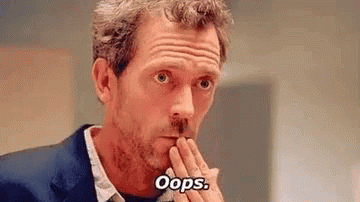
What I am NOT saying: “You can think your way out of chronic illness!” “Don’t treat your cancer, just do yoga.” “If you get a back injury, thinking positively and using healing crystals will work.”
Nope!
Obviously, treat pain with medical professionals first and get a bunch of different opinions.
But, if you’re someone who keeps falling through the cracks of the medical system, and deal with chronic pain, educating yourself on neuroplastic pain, and engaging in pain reprocessing therapy will probably be helpful for you. Hell, do it in conjunction with a regimen of medical science to address bodily problems and illnesses. Handle chronic pain with a top-down method (therapy, pain reprocessing, self-work) and a bottom-up method (medical diagnosis, medical treatments recommended by doctors, PT).
I felt so frustrated when I was seeking care after my back injury almost ten years ago. I saw that first doctor and then onto my chart went the diagnosis: Degenerative disc disease. What?? I thought. I’m in my early twenties. And, I literally just fell down the stairs. Of course my disc is fucked. But, this diagnosis has lingered on my chart ever since. It tells you, Watch out for this girl. Her discs are eroding at a breakneck pace.
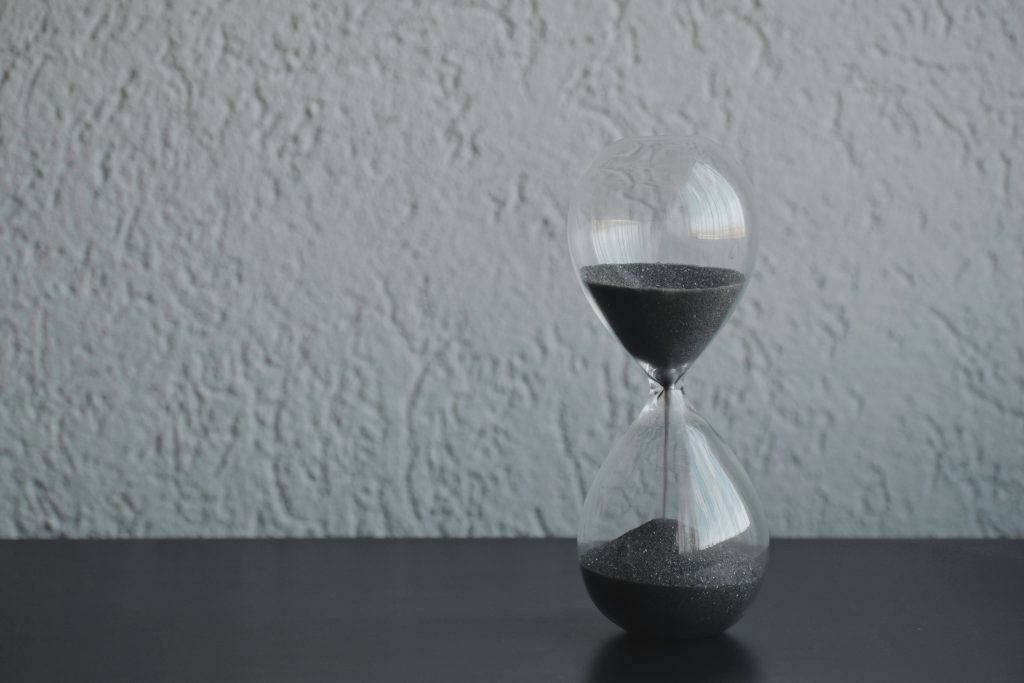
This scared the shit out of me. I felt like a sick, unwell person. My laundry list of stuff to disclose to doctors had suddenly become longer and more wearisome. Hypothyroidism, Hashimoto’s, TMJ, L5-S1 injury, type II malocclusion, Raynaud’s, fucking wisdom teeth extraction? Now this??
The diagnosis of degenerative disc was also hella validating. I was like, OK, I’m not making this up. The first doctor I saw who told me “not to be a drain on the system: and pressured me to go back to work after handing me a ton of narcotics (“what opioids do you like?” – actual quote) made me feel like shit about myself! But, the diagnosis meant, I’m not making it up. It’s not “All in my head.”
All of this contributes to the fear cycle that characterizes chronic pain. And, it also contributed to my faith in the medical system. I was in pain, I’m not a silly crystal person, so I trust the doctors to know how to treat it, right? I saw my back on the X-ray, and the MRI, it looked totally fucked. So after treating this medical issue, well, medically, I would be all better. Right?
Cue my life sucking for a few more years, lol.
Gordon’s model of pain reprocessing first asks the user to determine if their pain has a neuroplastic cause. Maybe not initially if an injury had occurred, like in my case, but following. Once enough time had elapsed for the injury to be healed and the pain remained. Once you’ve fallen through the cracks in the medical system, as I and many others had. Once a doctor has thrown up their hands, once someone has suggested it’s “all in your head,” once you’ve lost a bit of hope and are in the fear stage. Well, I guess this is just what my life is now.
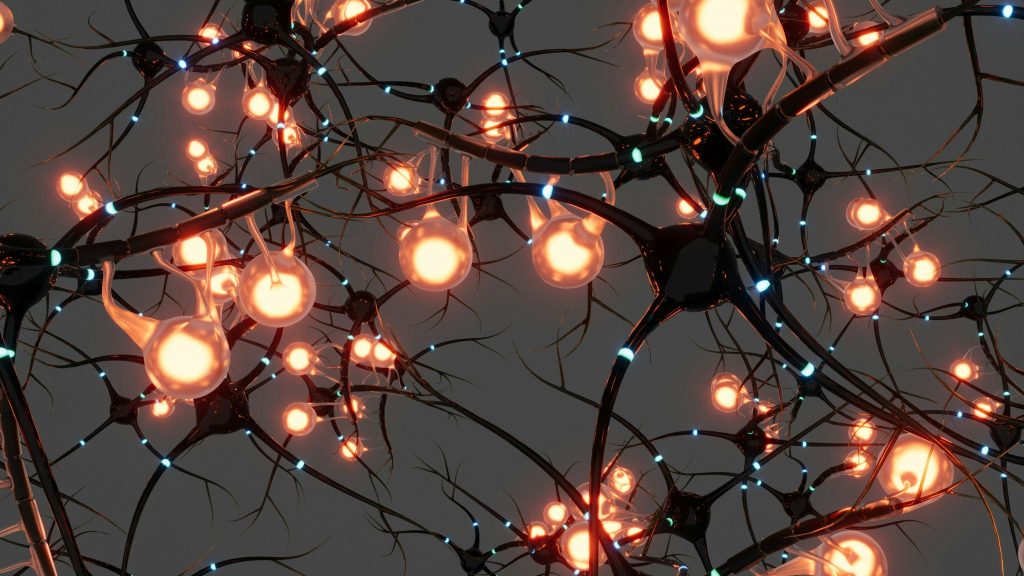
So, how do we determine neuroplastic pain?
Gordon suggests searching for exceptions. Times when the chronic pain remits, or lessens. Times when we don’t notice the pain, or it is mysteriously not present. Times in our pain narratives that don’t add up, if we are considering our pain to be caused by physical illness or injury.
He tells a story of himself attending a basketball game, and while at it, and totally enthralled, he noticed he was no longer feeling the chronic pain that had been in his life for years. Even though he was sitting in awful stadium seating, his back injury no longer hurt. This is an exception. Evidence that his pain was no longer physical in nature.
Exceptions could happen all over: not feeling the pain when you’re busy or otherwise engaged with something else, feeling better upon waking and then launching into pain after your day has started, only feeling sick when you’re at work or school and then feeling relief when home, noticing more pain when in an overly stressful situation, stuff like that.
Many people notice that their chronic pain onset is correlated with stuff that it would feel understandable to be correlated with, if we consider it in relation to a stress or fear cycle as opposed to a physical origin. My back pain occurred alongside a physical injury, but persisted during a time in my life when I was facing chronic stress: grad school, financial insecurity, working several jobs at once, and in an unhealthy relationship with the Harley guy. You know, that kind of thing. On top of massive childhood trauma. #justmillennialthings
So OK, now what. You think your chronic pain is likely neuroplastic. Hell, your pussy hurts, and there was never an injury there to begin with. So now what??
If we say our pain is neuroplastic, we’re encouraging our brain that it isn’t dangerous.
My back pain was a danger signal. It was a flashing neon sign that said, YOUR BACK IS INJURED, SARA. LET IT HEAL. Don’t sit weird, lift things, don’t fall down the stairs again. Listen to me. Learn the lesson.
At a point, the lesson was learned. Be good to my body. Take precautions.
But I no longer needed the neon sign. It got annoying. And draining. When my pain was no longer dangerous, the pain was no longer needed.
But it’s not that easy. I could accept the above, but believing it and feeling for myself was something different. I had to have more experiences combating the fear around my chronic pain and chronic health conditions before I could cut this forest path into a new six-lane highway.
This is the sticky part of chronic pain or other chronic health conditions where they fall into the cracks of the medical system. You’ve gone to PT, they’ve declared you medically fine. You’ve had the procedure, you’ve taken the medications, you’ve had a doctor get frustrated. Then what? This is when people present in my office for therapy, generally.
There is a lion’s share of work of creating a pain narrative, exploring the causes (allopathic pain and injury, neuroplastic pain and our belief systems, emotions, and cognitions), and working to create a new way of conceptualizing and managing our pain and bodies.

Part of managing chronic pain conditions is acknowledging the fear response. This could be straightforward fear cognitions (“If I sit in this chair it will hurt, my pain will never get better, I’m fucked for life”) and related negative cognitions (“My body is a piece of trash, I hate this, I’m creating this so I must really suck, I resent others who don’t get it”). This could also be noticing other chronic stressors.
If you had asked me at the time of my back injury if I felt that my chronic pain was related to stressors of my life at that time I would have laughed at you too. No, fuckwad, look at my X-ray.
But hindsight’s 2020. When reprocessing my pain, I am able, with the distance I have from the problem, to understand how hard that period of my life was for me. And, it makes sense that that chronic stress and tension would lead to bodily manifestations which would include chronic muscle tension and pain.
More recently, I dealt with chronic pain related to TMJ. This is a pain that occurs in the temporomandibular joint — the bones of the jaw that hinge and allow me to yap, or eat sloppy steaks.
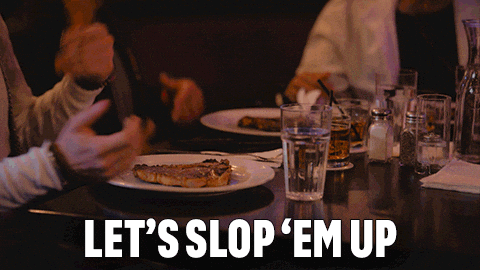
I found it so funny that my TMJ pain only arose after doing this job for a few years. Sure, I can attribute it to the chronic stress on my joints from having a job that’s talking. And, it probably doesn’t help that I am laughing and smiling, like, all day (what a goddamn chore, right?) and nodding. Ugh.
But, more interestingly, my TMJ manifested after said stressful relationship, as well as repeated work in this career with people with chronic TMJ disorder and pain. I believe that hearing folks’ stories of trauma and chronic pain all day probably manifested in me engaging in checking behaviors with my own body, and then interpreting these bodily signals as pain: neuroplastic pain.
Here’s an example of how it could’ve gone down: Folks talk about their TMJ. I, using my empathy, imagine what this must feel like. I learn the behavior of checking on my jaw joints and face muscles. I do this more and more often during the day because my job is talking and so I anticipate repeated stresses and potential wear and tear and pain. I grow more and more accustomed so my dial gets turned up: I notice smaller signals of bodily discomfort and am primed to expect this as pain. I hear more trauma and woe surrounding TMJ and I may fear that happening to myself, or mourn for folks that their pain is so bad. I fear the pain for myself. And wow, what’re the odds — my face fucking hurts. Also my relationship sucks because Harley guy is a political cult member so I’m gritting my teeth all the fucking time, haha.
This happened over a period of years where I noticed it worsening. Then, one day, I noticed I was just in pain all the fucking time. That was fun. My will to live was pretty minimal for a while, because my face hurt so bad. This, following my back, was really fun. Not.
Let me skip ahead. I want to say, I am not in pain now. I take an ibuprofen maybe once a month? There’s headachey weeks, don’t get me wrong. If you were to touch my traps or masseters they definitely are way too tight. I live a stressful life, and don’t exercise or stretch enough. I attribute this to managing my pain, and more importantly, managing the cognitions and feelings about my pain. (In addition to having sought appropriate medical care at the time of the issues, years ago — but the pain lingered after these treatments.)
Managing chronic pain involves managing our feelings and cognitions about the pain. Therapy is a great place for that. Or you can do that work on your own, with self-reflection, journaling, reading, etc. Managing chronic pain also involves, unfortunately, being real with yourself about your stressors.
Chronic Stress
Every single time it gets to the point in therapy where I ask someone to show me the app timer on their phone, they resist me. I know I spend too much time on Instagram/Reddit/the news; I’m not ready to give it up. People, when I ask to see their app timers, feel so much shame they don’t even want to show them. They could be pouring their guts out about the wildest porn they just masturbated to the night before, but being real with their phone usage is a bridge too far.
This shit sucks. I get it. I use reddit way too much, I’ve doomscrolled the news, I “should read more” and don’t, I rot when I could be going for a walk and touching grass. First and foremost, we’re human. How about we forgive ourselves for being monkeys being addicted to our glowing boxes.
However, being chronically connected means we’re chronically stressed. We’re always on and always plugged in. Notifications feel great and feel like shit. We are addicted to our phones.
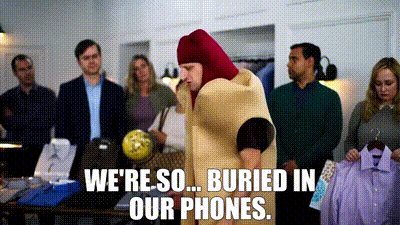
Not to mention other stressors. Working too much. Being too connected or affiliated with our jobs. Having work email on our phones, being expected to pick up. Poor relationships, friendships, stress with socializing, not replying “fast enough,” the associated guilt and shame and fear. Not having financial security. Not having enough access to close community or third spaces.
Sometimes, stress is more a lifestyle than a state of being. Bro, that fucking sucks.
Most of all, the self-punishment is the problem. People hanging their head and feeling shame when faced with the app timer. Folks saying self-defeating hurtful shit like, “I should know better. I am a failure.”
Look, I cannot control the income inequality that is gonna go down as the albatross of our time. I cannot make us go back to the 90s before all this shit existed and we felt hopeful and connected (at times, lol). I cannot control that your work demands you be on-call and that’s the only job you’ve got right now.
But we can control how we speak to ourselves. We can manage to pave a six-lane highway of affirmation and self-care where there might be a strong neuronal connection with self-punishment, shame, negative self-talk, people-pleasing, poor self-image or self-esteem or whatever the fuck else was there prior. I think focusing on that in therapy is a huge deal.
A few years back, I met with Dr. Echenberg, renowned expert in chronic pelvic pain, to discuss the overlap of our professions in our field and knowledge about neuroplastic pelvic pain conditions. I shared with him my story of chronic pain, including pelvic pain (which funnily enough I only discovered after running a chronic pelvic pain group and attending pelvic PT “just for the hell of it.”). He made a comment that he was surprised that my pelvic pain had not manifested into chronic, 24/7 pain, because my symptoms align with a constellation of symptoms we see in our chronic pain patients (pelvic pain, injury to the area, chronic muscle tension, stress, childhood trauma, cultural and religious trauma around sexuality, etc).
This experience made me think — first, the knee-jerk reaction of fear: Oh no, could I be in chronic pain like that too? Stories of trauma and life-ending pain shot through my mind, as I know how deep the well can go. But, my real reaction, once the knee-jerk of fear is over, is self-care. I have sometimes pain and that’s OK. It doesn’t have to disrupt my life. I know I can heal from painful conditions since I managed my back pain. I trust my care team. I trust that if my pain changed, I could find a way to manage it. I know people can heal. These cognitions are me self-soothing and calming my nervous system, lifting me out of the pain/fear cycle.
I attribute my weird experience of overcoming pain to the cognitions I regard my pain and my self with. I was in a position where I could only lie down comfortably, and attended PT 3x a week for my back, and now I am in back pain… maybe a few days a year? It took a few years of chronic pain under my belt before finding “the way out,” but I know it’s possible because it happened to me. I know it’s possible because I have dozens of stories of clients overcoming chronic pain and health conditions. I can be bolstered by these experiences.
I had a proclivity for chronic pain and stress. That’s reasonable. Some people do. There are people who smoke all day every day and live long lives and people who eat healthy and exercise who die young. Who knows?? For folks who have a proclivity to chronic pain and health conditions, managing the fear/pain cycle becomes so important.
But, managing all this also means I have to know myself and be real with myself, and curb fear behaviors that increase fear cognitions. This means no googling symptoms. No WebMD. That shit. Have you ever been down a 3am google rabbit hole? Yeah, no. Go read the cooking subreddit instead if you really must feel pulled to use your phone at the panic hours. Go feed your neopets and play solitaire. Something that isn’t feeding the fear under-the-bridge troll toll.

When people first present in therapy for a chronic pain issue, generally so much time in session is devoted to discussing it. And that makes sense! It’s the presenting problem. And constantly on your mind. Pain sucks. Not being able to have sex the way you feel you should sucks. Feeling like you have to pee constantly and you cannot predict it sucks. Your bubble gets really, really, small and focused on The Issue™. That’s par for the course.
Over time, with pain reprocessing, the bubble gets bigger. Suddenly I can go to work events without panicking where I’m gonna sit, or lift a box without that fear reaction. Maybe I only notice this in hindsight: one day, I realize I haven’t had the anxious cognition in a while. I welcome these experiences. We expand beyond the presenting problem. Then we work on how to have a life expanded beyond the scope of pain and chronic health conditions. That’s exciting. They might still be there, but they are no longer ruling the roost.
Gordon’s somatic tracking recommends looking at fearful cognitions related to pain with curiosity and interest. Not fighting the pain, not beating ourselves up, not trying to be “perfect,” not avoiding the pain (when it’s a manageable pain): just sitting with the bodily signals that we are interpreting as pain/urgency/discomfort and trying to understand them. It sounds counterintuitive to what a person’s fear-alarm system and our medical opiate model tell us: just feeling the pain. Working on looking at it with lightness and curiosity. Reframing our experience of pain as the body interpreting bodily signals as dangerous when they could just be normal sensations.
Avoiding pain is, like, a “well, duh!” thing. Of course! Pain feels like shit. Pain also exists to keep us healthy and well by avoiding unhealthy or unsafe situations, and take time to heal. Just like a bad smell tells us to avoid a thing that could make us sick or be dangerous, it only makes sense to heed pain’s warning.
And yet, Gordon recommends understanding our avoidance behaviors, and hell even using them when pain is unbearable or high on the scale, but for the rest of time, setting them aside in our toolbox to use the reprocessing work of somatic tracking. We want to only do somatic reprocessing work — sitting with the pain — when it’s not so bad. In this way, we have more corrective experiences, and lessen increasing our fear and avoidance mechanisms. As Gordon reminds us, this isn’t “pushing through the pain” — there’s no bootstraps here. Just noticing bodily signals and working to sit with them and understand them when the pain is more manageable.
In doing so, we create corrective experiences (escalators), and avoid retraumatizing experiences (eels).
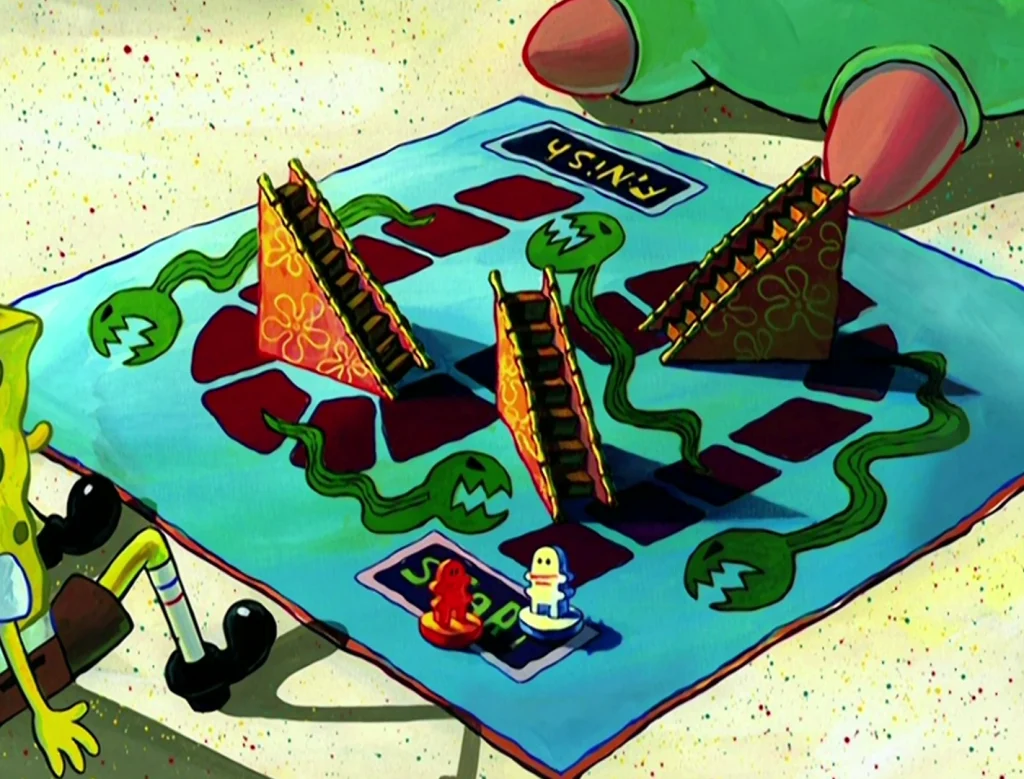
Somatic reprocessing, as aforementioned, also means looking at our fear cognitions around pain with curiosity and interest. We all have a fight or flight mechanism; it’s ingrained. Sitting with our bodily sensations to better understand them is almost like learning physics to understand how much force and at what angle we need to throw a ball while considering wind resistance: it’s a lot! We have an inborn ability to just throw the ball! We don’t need to question it! And yet, learning these skills of self-understanding can be some of our life’s most important work.
Another aspect of somatic tracking involves challenging fear of pain and putting yourself in situations where pain may be present and then caring for yourself.
Many of the behaviors I learned from chronic pain are what I would call guarding behaviors. Spending time lying down because I was afraid sitting would exacerbate my back pain. Not moving my jaw because I was afraid to knock it out of position or be in pain. Guarding behaviors I see from others include avoiding sex, limiting water consumption to avoid using the bathroom, and policing their diet, among other things.
For me, it came as a great surprise in physical therapy that part of the process is strengthening muscles, but also challenging myself to be in uncomfortable situations that I had learned were associated with fear. I had put limitations on my life and activities because I thought that would keep me safe but people need to sit. People move their jaws to the side or wide open to eat an apple. It’s ok. Here’s the cognition: I’m safe.
This was the most major step in my healing for my back. I had just traveled on my first solo trip ever and was in extreme pain from carrying my suitcase off the plane. I was in Denver for the first time and pulled up Google maps and called the first chiropractor I could find (I know). He agreed to see me that evening and did the most painful adjustments to my back — I was black and blue for weeks after.
But, I wasn’t in pain. Or at least, not more than I had been. I think this experience showed me I could push my limits and experience pain and bending and bizarre little men pounding on my spine without injury. The spine I had worked so hard to guard didn’t need guarding. I was flummoxed. Most importantly, I was less afraid. I felt I could challenge my comfort zone and guarding behaviors.
So we’re managing setbacks, not pushing through the pain, and working to better understand bodily signals, thoughts, and feelings when the pain is manageable. Swell.
Another key component Gordon mentions is trusting the process.
If you’ve been through chronic health issues, you know what it’s like to groan and say, Another thing?! Yup. Setbacks happen, worse pain days than others happen, and just like any other behavior, our brain populating a pain response, while being unlearned, can cause what’s known as an extinction burst to occur. You’d thought you were doing well and doing The Work™ and then you have a day of screaming pain, misery, urgency, whatever other symptoms are present. That’s actually part of recovery from chronic conditions. Your brain tries to divert all resources to the old six-lane highway.

Don’t quit. Just take a break, and keep hacking away at the bushes. Care for yourself. Soothe yourself. It’s OK, you’ve done so much work thus far. We can have frustration with the process, but perhaps we can work to only have compassion for ourselves.
Gordon calls it catching your fears — noticing when a fearful cognition comes up, and managing it, implementing self-soothing.
If my back hurt now, knowing that healing is possible, I would surely feel some of the old twinges of fear come up: I thought I’d moved beyond this. I thought it was over! I don’t want to go back! What am I doing all this for? Etc.
We can self-soothe, but only when we notice we’re doing the thing again ie having fearful cognitions. So get good at noticing when the call’s coming from inside the house. Then, we can either ignore the call and self-soothe (streaming binges we love), or pick it up and say some better messaging. Even if we can’t aim for positivity, we can aim for neutrality: It’s understandable this is scary. Pain feels unpleasant. It’s understandable I feel fearful to be back to where I was. I know healing is possible. This can work out. I can choose to stay the course. This pain could be incidental and not a sign of relapse. Bodies make weird signals sometimes. Etc.
Finally, how about we embrace some positive bodily sensations?
Many people who go through chronic health conditions begin to feel that their body is an enemy, some sort of foreign entity that exists to torture them. I get it. I spent many a night resenting my jaw for not being “like a normal person’s.” OK. But it’s still the only body we’ve got, and ice cream tastes fucking great.
Things I love to feel in my body:
- Going outside and feeling sunlight on my skin
- Being in any setting and smelling all the stuff around me — plants, wet wood, dusty desert sap, bookstores, candles, clean sheets, the list goes on and on
- EATING?! Flavors! Oh, how I love thee. Even if my jaw is killing me because I took a big risk and ate a granola bar so now I gotta be in smoothieland.
- Feeling my linen sheets, and many textures
- Getting a massage, cuddling, petting cats and dogs
- Also, the trillion things to see? Zooming in on a leaf pattern, watching a movie or show, going somewhere with a view
- Stretching
- Listening to music, especially trash lol
- Existing in water
- Laughing along to a comedy show or podcast or all my clients’ jokes
Working on making the body an ally again is less “look on the bright side, at least we have this, count your blessings” (fuck all that) and can be more “damn I do love chili fries,” or even the tested and true cold glass of water.
If any of this has felt relatable or like it speaks to you, I highly recommend checking out Alan Gordon’s book, The Way Out. It says this stuff with great efficacy and eloquence than I could. It’s a quick and easy read, and I think it would be well worth exploring.